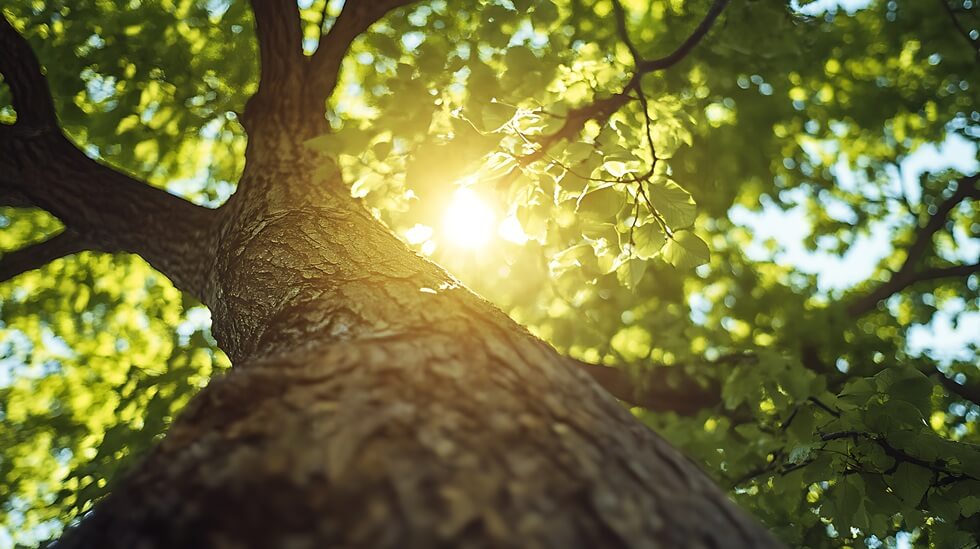More than just being unsightly, tree diseases can be detrimental to the health of a landscape even beyond the survival of each infected tree. Diseases can be breeding grounds for fungi, pests, and conditions that can spread to other plants. In Virginia, common tree diseases cost property owners hundreds of healthy plants each year, showing the importance of plant health care.
The tragic part is that, given the right proactive response, even infected trees can often recover without damaging the rest of the landscape. This brief guide covers common tree diseases in Virginia to help property owners identify them early and find the right solutions before it’s too late.
Even seemingly harmless anomalies can be signposts to deadly tree illnesses that can infect the entire property. Property owners should be able to recognize common signs of diseases, but to identify and stop the spread, plant health care experts are still the best resource.

1. Discula Anthracnose
This well-known disease leads to damage and death among Virginia’s flowering dogwood species, the source of Virginia’s state flower. When dogwoods bloom in the spring, they can be the centerpiece of a beautiful property; however, this potentially fatal disease can also destroy them forever.
Discula Anthracnose is an incurable fungal disease. The primary signs include tan or brown spots on the leaves, often with red rings around them. While tree care experts can keep infected trees alive with yearly treatments, the fungal disease cannot be removed once it spreads.
2. Oak Wilt
Oak wilt (oak decline) is a common tree disease that impacts mature oak trees across Virginia. Spores carried by insects can infect the tree through holes in the bark or roots. The fungal spores spread throughout the tree’s system, causing several telltale signs, including pale, yellowing leaves that drop earlier than expected.
Only a fast, methodical response from a plant health care expert can potentially eliminate the fungal infection and prevent its spread. Despite the common name of this disease, it is not limited to oak trees. Beech and chestnut trees on the same property can become vulnerable if the insects carrying the spores cross-contaminate.
3. Thousand Cankers Disease
Thousand cankers disease is an extensive illness that causes the bark to die in patches that eventually prevent the tree from getting the nutrients and water it needs to live. In technical terms, the fungus responsible for this disease is called Geosmithia morbida, which, according to the Environmental Services page for Fairfax County, Virginia, “is spread to healthy black walnut trees by the walnut twig beetle.”
These beetles form symbiotic relationships with the fungus, infecting the tissues beneath the bark and spreading the fungus through the tree. Left untreated, this multifarious disease kills walnut trees. In many cases, once the sores are visible, tree removal is the only option to prevent their spread.
4. Laurel Wilt
Laurel Wilt, much like Oak Wilt, is a disease born from a fungal pathogen carried by a local insect to certain types of trees. In this case, the pathogen (Raffaelealauricola) is carried by the redbay ambrosia beetle to trees in the Lauraceae family. According to the Virginia Department of Forestry, these include sassafras, spicebush, and redbay trees.
Laurel Wilt infects the vascular systems of trees, leading to poor dispersal of nutrients. This causes the leaves to turn brown and die while the bark begins to rot. Soon after infection, the tree will die as well. A property owner’s only recourse is usually to remove the trees before the pathogens spread.
5. Insect-borne Diseases
Insects are a major carrier of tree diseases in Virginia. In addition to those already mentioned, these insects pose major issues for landscape health throughout the state:
- Emerald Ash Borer: These Asian beetles feed on the tissue of ash trees by burrowing beneath their bark. They are the deadliest non-native insect to tree health in the United States and have caused the deaths of hundreds of millions of ash trees since their introduction. They are green and silver-shaped, marked by the swirling trails they leave in the tree tissue as they feed.
- Hemlock Woolly Adelgid: These non-native insects from Asia infect eastern hemlock trees through their sap. Infections are indicated by waxy, white beads collecting on the branches below the needles.
- Southern Pine Beetle: Southern pine beetles are extremely destructive pests that often spread throughout dense pine forests. They usually affect trees that are already stressed, such as during a season change.
- Spotted Lanternfly: Spotted lanternflies feed on the sap of various trees, including peach and hops. They were first detected in Virginia in 2018, so many property owners are unaware of the dangers they pose.
- Spongy Moth: Spongy moths, specifically the larvae, damage trees by defoliating them, and they can work quickly. Virginia chestnut, birch, alder, aspen, basswood, willow, and hawthorn species are the most vulnerable. They don’t usually bother holly, dogwood, or ash.
If you suspect an infestation, or think you have identified any of the above or others, contact a certified arborist to confirm the identity and outline a plan for your situation.

Partner with Virginia’s Experienced Plant Health Care Experts to Stop Diseases Before They Spread
At RTEC Treecare, our arborists help property owners recognize tree diseases before they spread. In many cases, infected trees can be saved with proper proactive care and maintenance. However, when tree removal is the only option, our plant health care specialists will strategize the best method for the property’s long-term health.
Contact our team today to learn how to stop common tree diseases in Virginia. Even if the signs are not yet evident, regular maintenance is essential to stopping pests and fungal infections before they destroy your landscape.


